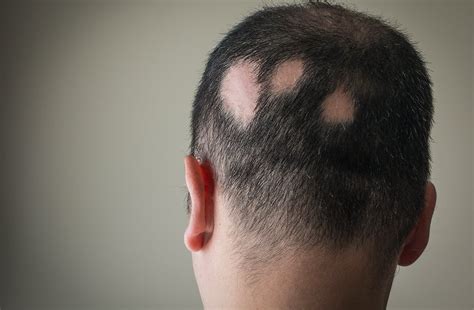Bald head patches, also known as alopecia, can be a distressing condition that affects millions of people worldwide. The appearance of such patches on the scalp can significantly impact self-confidence and overall well-being. This comprehensive article delves deep into the causes, treatments, and preventive measures associated with bald head patches.

Causes of Bald Head Patches
1. Androgenetic Alopecia (Male and Female Pattern Baldness)
- The most common cause of hair loss, affecting over 50 million men and 30 million women in the United States.
- Occurs due to genetics, hormonal changes, and age.
- Androgens, male hormones, cause follicles to shrink, leading to thinner and finer hair shafts.
2. Alopecia Areata
- An autoimmune disorder where the body’s immune system attacks hair follicles.
- Results in round or oval patches of hair loss on the scalp or other parts of the body.
- Affects approximately 6.8 million Americans, up to 2% of the population.
3. Telogen Effluvium
- A temporary hair loss condition triggered by a stressful event, such as childbirth, surgery, or emotional trauma.
- Occurs when large numbers of hair follicles prematurely enter the resting phase, resulting in excessive shedding.
4. Tinea Capitis (Ringworm)
- A fungal infection that causes a ring-shaped rash on the scalp.
- Can damage hair follicles and lead to temporary bald patches.
5. Chemotherapy
- A side effect of cancer treatment that damages or destroys healthy cells, including hair follicles.
Treatments for Bald Head Patches
1. Medical Therapies:
- Minoxidil (Rogaine): Topical solution that slows or stops hair loss and promotes new growth.
- Finasteride (Propecia): Prescription medication that blocks the production of dihydrotestosterone (DHT), which contributes to androgenetic alopecia.
2. Surgical Procedures:
- Hair Transplantation: Removing hair follicles from a donor site and transplanting them to the bald areas.
- Scalp Reduction: Removing a section of bald scalp and suturing the remaining hair-bearing skin together.
3. Laser Therapy:
- Low-Level Laser Therapy (LLLT): Using lasers to stimulate hair growth by increasing blood flow and nutrient delivery to follicles.
4. Alternative Therapies:
- Essential Oils: Some essential oils, such as lavender, rosemary, and peppermint, may help promote hair growth.
- Acupuncture: May stimulate blood flow to follicles and reduce inflammation.
- Diet: Ensuring a balanced diet with adequate vitamins, minerals, and protein is crucial for hair health.
Prevention of Bald Head Patches
While not all causes of bald head patches are preventable, certain measures can help reduce the risk:
- Manage stress: Telogen effluvium can be triggered by stress.
- Maintain a healthy lifestyle: A balanced diet and regular exercise promote overall health and hair growth.
- Avoid harsh chemicals: Chemicals in hair products or styling tools can damage hair and follicles.
- Protect from sun damage: UV radiation can damage hair shafts and follicles.
Conclusion
Bald head patches can be a challenging condition, impacting both physical appearance and emotional well-being. Understanding the causes and available treatments is crucial for managing the situation effectively. While some causes cannot be prevented, lifestyle modifications and proper care can help minimize the risk of hair loss or promote regrowth. Seeking professional advice from dermatologists or hair specialists is recommended to determine the best course of action based on individual circumstances.
